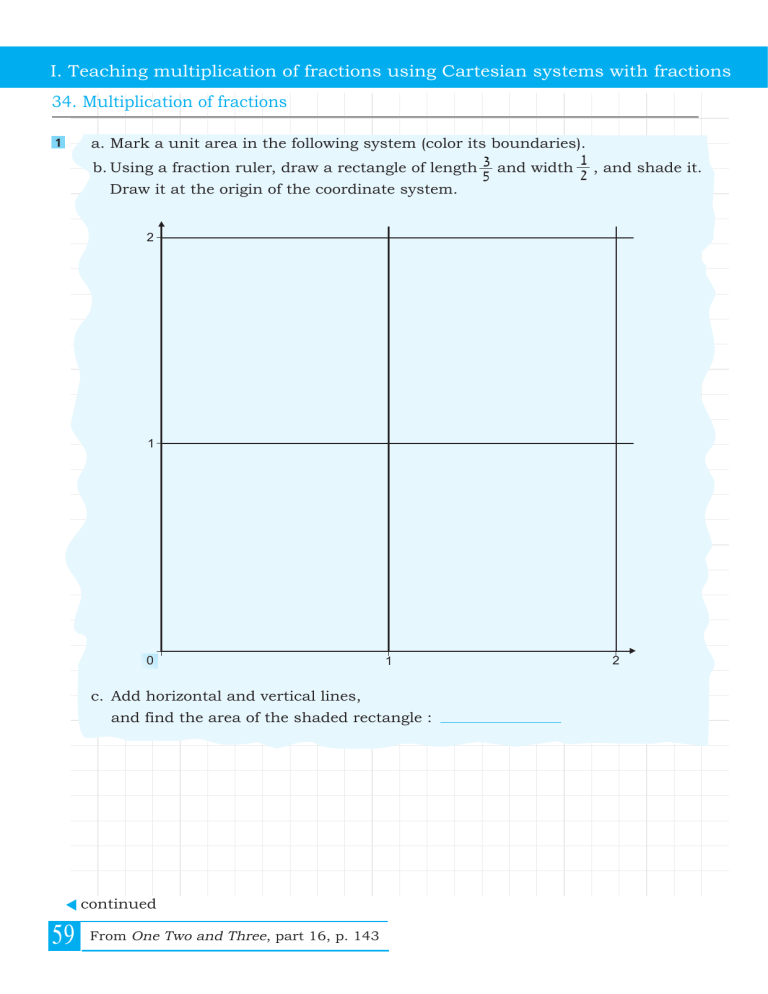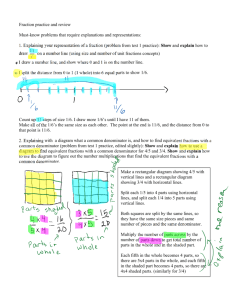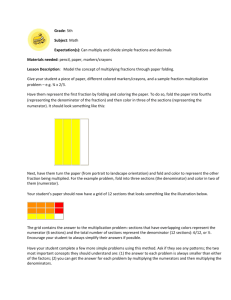34. Multiplication of fractions I. Teaching multiplication of fractions

I. Teaching multiplication of fractions using Cartesian systems with fractions
34. Multiplication of fractions
±
a. Mark a unit area in the following system (color its boundaries).
≥
µ
± b. Using a fraction ruler, draw a rectangle of length and width , and shade it.
≤
Draw it at the origin of the coordinate system.
2
1
0 1 c. Add horizontal and vertical lines, and find the area of the shaded rectangle :
2 continued
59 From One Two and Three, part 16, p. 143
I. Teaching multiplication of fractions using Cartesian systems with fractions continued from the previous page
≤
How do we find the solution of the following multiplication exercise?
≤ ¥
_ =
≥ µ
We have to build a rectangle corresponding to the exercise and find the rectangle's area in the drawing.
!
The area of the rectangle is the solution of the multiplication exercise. a.
Take a transparent system appropriate for the exersice.
Build the rectangle corresponding to the exercise by shading or by covering it with the red transparency. b .
How many equal parts are there in a unit area in your coordinate system?
Find the area of the rectangle in the drawing:
Write the multiplication exercise and its solution:
Check: Did you get a rectangle similar to one of the following rectangles?
3
8
3
7
3
2
5
3
4
3
1
2
3
1
3
0
1
5
2
5
3
5
4
5
1
6
5
7
5
8
5
9
5
2
2
9
5
8
5
7
5
6
5
3
14
5
13
5
12
5
11
5
1
4
5
3
5
2
5
1
5
0
1
3
2
3
1
4
3
5
3
2 continued
60 From One Two and Three, part 16, p. 147
I. Teaching multiplication of fractions using Cartesian systems with fractions continued from the previous page
≥
a. Solve the following multiplication exercise f using a coordinate system:
≤
µ
≥
_ =
∏
Discussion When we look at the coordinate system in which we solved a fraction multiplication exercise:
•
•
c. Finish solving the exercise:
≤ ≥
_ =
µ ∏
Check: You may check the solution in a coordinate system.
Summary
When multiplying fractions, we multiply numerator by numerator and denominator by denominator:
The number of equal parts in a unit area
= _
The number of equal shaded parts in the rectangle
=
61 From One Two and Three, part 16, p. 155








